It’s not just picking the best fertilizer for Monstera but understanding when and how often to feed these lovely houseplants. Otherwise, you may end up with fertilizer burns (overfeeding) or having nutritional deficiencies.
We have insight into Monstera fertilizer requirements, the best brands to buy, and how to feed your plants correctly. You will also learn how much and how often to fertilize these plants.
The species you have doesn’t matter much. Why? Because all species, be it Monstera deliciosa or Monstera adansonii, require the same fertilizer and have similar feeding requirements.
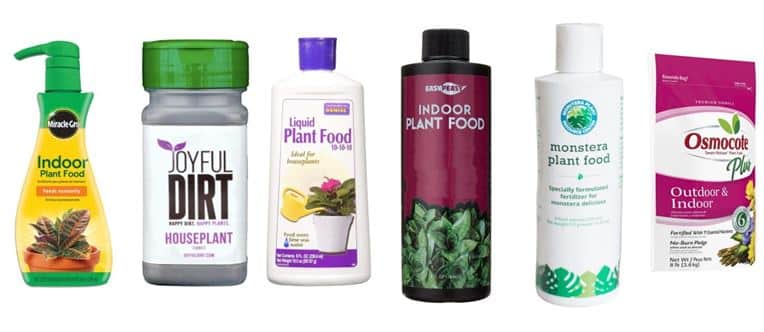
Contents
- What are fertilizers
- Why does your Monstera need fertilizers?
- Organic or inorganic?
- 1. Organic fertilizers
- 2. Inorganic or chemical fertilizers
- Signs your Monstera needs fertilizer
- Monstera fertilizer requirements
- The best fertilizer for Monstera and NPK
- 1. Miracle-Gro Indoor Plant Food (Liquid)
- 2. Bonide Liquid Plant Food, 10-10-10 Soil Fertilizer
- 3. Joyful Dirt Organic Based Premium Concentrated House Plant Food
- 4. Easy Peasy Liquid Indoor Plant Food, All-Purpose Indoor Plant Fertilizer
- 5. Houseplant Resource Center Monstera Plant Food
- 6. Osmocote Smart-Release NPK (15-9-12)
- When to fertilize your Monstera?
- How to fertilize Monstera
- How often to fertilize Monstera?
- Monstera fertilizer burn and other overfeeding signs
What are fertilizers
Fertilizers refer to the materials you add to soil or feed plants to provide the nutrients plants need to sustain growth. They can be organic or inorganic.
They come in various forms (liquid, powder, granular). You will also find the slow-release formula. You will also find types, depending on their constituent, like nitrogen, micronutrient, or phosphorus fertilizers.
Why does your Monstera need fertilizers?
Plants, including your Monstera, need 17 essential nutrients for healthy growth and development. Of the 17, they can get 3, i.e., hydrogen, carbon, and oxygen from water and carbon dioxide. The rest comes from soil or growth medium.
Those needed in more significant amounts or macronutrients include nitrogen, potassium, calcium, magnesium, phosphorus, and sulfur.
On the other hand, these houseplants need chlorine, iron, boron, manganese, zinc, copper, molybdenum, and nickel in trace quantities (micronutrients).
Initially, the soil may have most of these nutrients as you plant. But as time goes by, they get depleted. To fix the issue, you need to feed your Monstera.
So, fertilizers will help in the following ways:
- Provide unavailable nutrients
- Replace those plants that have depleted
- Balance nutrients
Remember, if your Monsteras are healthy, they will effectively fight against disease and pests. Also, they will grow faster.
Organic or inorganic?
As you hunt for the best fertilizer for Monstera, you will get people recommending inorganic others, organic.
Let us look at each of these two, giving you pros and cons. That way, you will be able to decide which one favors you.
1. Organic fertilizers
Organic fertilizers are the ones that have naturally decaying material from plants or animals (manure or compost) and some rock minerals.
Here are the pros and cons:
Pros
- Improves soil structure and ability to hold water and nutrients
- Favor growth of microbes that make soil available naturally – don’t upset the normal balance of microbes.
- Environment-friendly and sustainable – they hardly runaway, meaning they will not affect water quality or harm marine life quality.
- Unlikely to damage roots since they don’t have toxic chemicals or acids
- Released slowly but at sustainable rates. So, you are unlikely to overfertilize your plant.
Cons
- They are less effective because nutrient release depends on microorganisms that need warmth, moisture, and other favorable conditions.
- Organic plant foods take a little longer to show effects, i.e., they will start working after a breakdown in the soil.
- Expensive
- Not equally created, meaning you will get a lot of inconsistencies depending on which one you buy.
2. Inorganic or chemical fertilizers
Inorganic fertilizer (chemical or synthetic) has mined minerals and synthetic chemicals. They too have advantages and disadvantages, which are as follows:
Pros or advantages
- Affordable and readily available
- Give fast results, i.e., you will notice results in a few days to weeks and not months. Why? Because they contain nutrients that are ready to drink.
- Have standard labeling, meaning you can know what they exactly contain.
- Convenient to use – easy to use and save time
Cons or disadvantages
- They are not eco-friendly, i.e., they have some chemicals that may leach to water sources and cause pollution.
- Inorganic fertilizers will not improve soil structure and health or support microbes as they don’t have any organic matter.
- Since they release nutrients quickly, they may result in overfertilization
- Long-term use may result in a buildup of harmful chemicals and alter soil pH.
You know the pros and cons of organic vs. inorganic fertilizer. You are free to go for any kind you like. But ensure you get it from a reputed manufacturer.
Signs your Monstera needs fertilizer
When not getting enough nutrients, signs your Monstera will have to include the following:
- Your Monstera leaves may not split or fenestrate.
- Your plant may have yellow leaves, including yellow spots, margin, and interveinal chlorosis. It may start from older or younger leaves, depending on what is lacking.
- Brown spots on leaves
- Leaf margin and tips browning
- Stunted growth
- Necrosis
- Mishappened or twisted leaves
- Leaves having a purplish or reddish tone
- Holes on leaves
- Leaves looking scorched
Monstera fertilizer requirements
Monstera has medium fertilizer needs, i.e., all the Monstera species, including Monstera deliciosa (split-leaf philodendron), Monstera adansonii, obliqua, siltepecana, or what you have, are medium feeders, meaning they need moderate amounts of fertilizing.
The University of Florida affirms this by noting that “Monstera fertilizer requirements do not appear to be high.” Also, don’t overfeed these plants because high soil salts will burn your Monstera, warns the University of Connecticut.
The best fertilizer for Monstera and NPK
You want to know which are the best fertilizers for Monsteras. Before we tell you, let us talk about N-P-K, something you will find on most labels.
NPK ratio tells you the amount of three essential nutrients, i.e., Nitrogen (N), Phosphorous (P), and Potassium (K). A brand with NPK 20-20-20 means it has 20% nitrogen, 20% phosphorus, and 20% potassium. The remainder may be fillers and other lesser nutrients.
Since NPK tells you the concentration of these three vital nutrients, the higher any nutrient is, the more concentrated it is and vice versa. A 20-20-20 has twice the amount of nitrogen, phosphorus, and potassium as a 10-10-10. It also means you will dilute it more.
Back to your subject matter. Which is the fertilizer for Monstera? We recommend a high-quality, all-purpose, balanced, liquid houseplant fertilizer such as a 20-20-20 or 10-10-10. Buy from a reputed manufacturer.
That said, you can still go for a balanced granular fertilizer significantly if you are growing your plants outside. Even a slow-release formula is still ok. Still, get a balanced formula.
Even brands that are not necessarily balanced, such as 3-1-2, will still work well. If you want to encourage blooming, you can go for one with high phosphorus. But unfortunately, Monstera plants are not bloomers when grown indoors.
Here are the four best fertilizers for Monstera:
1. Miracle-Gro Indoor Plant Food (Liquid)
Miracle-Grow is a household name licensed by OMS Investments Inc but made by Scotts Miracle-Gro Company purposely for indoor houseplants, including edibles.
This balanced fertilizer, NPK 1-1-1, will work perfectly well for your Monstera. Apply half the recommended amount either directly or in water, once a week.
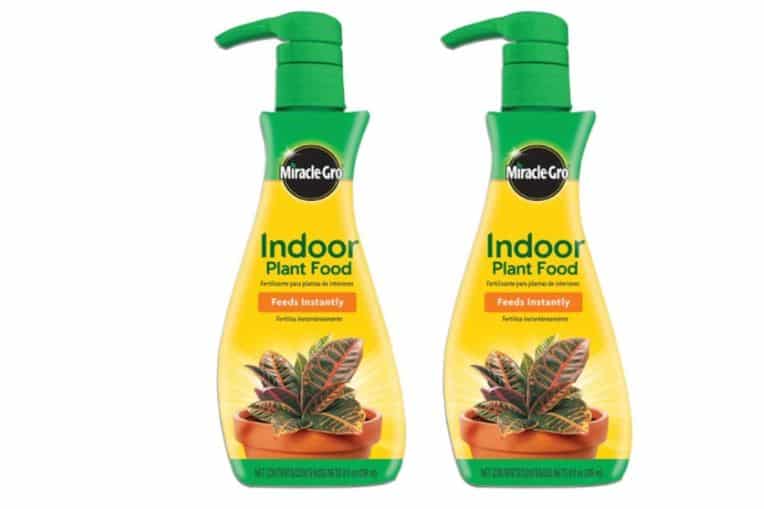
2. Bonide Liquid Plant Food, 10-10-10 Soil Fertilizer
Bonide is another perfect balanced (10-10-10) liquid houseplant you can use on your Monstera and other houseplants. Mix a ½ a teaspoon to a gallon of water and drench your plant.
This American-made liquid fertilizer will promote healthy growth, beautiful split or fenestrated lush leaves.
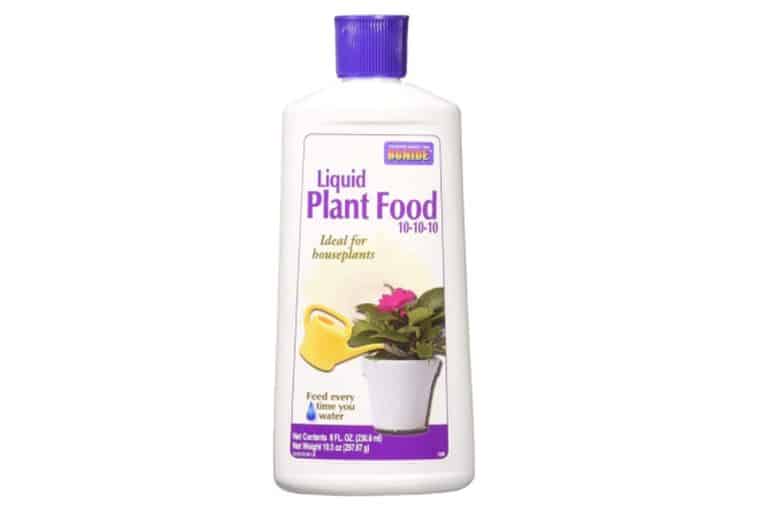
3. Joyful Dirt Organic Based Premium Concentrated House Plant Food
This organic fertilizer is not balanced, i.e., it has NPK 3-1-2 but is undoubtedly an excellent pick for your Monstera and other houseplants. You can apply it directly to your plant or mix it with water once a month or every watering.
We recommend using ¼ a teaspoon per gallon of water and using the mixture to water plants. Within no time, you will notice a visible change in your Monstera. It will have larger, healthier, and lush leaves.
Last but not least, Joyful Dirt Organic plant food and fertilizer is safe for children or pets and uses Mycorrhizae and other ingredients designed to ensure your houseplants use less water.
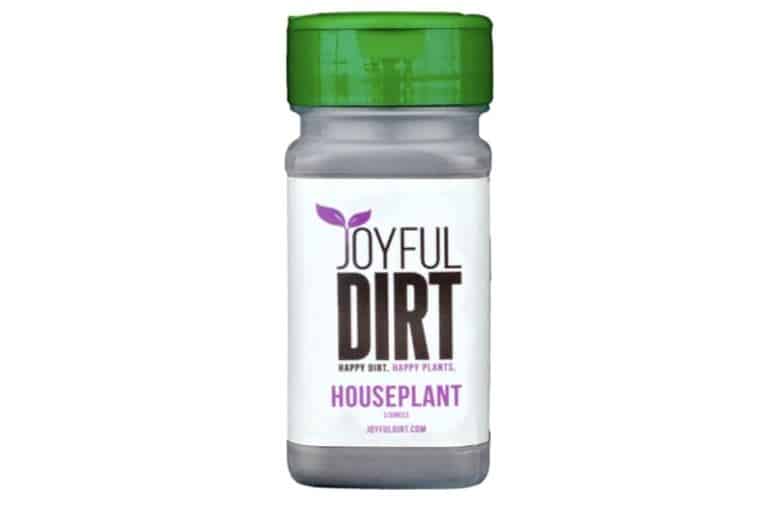
4. Easy Peasy Liquid Indoor Plant Food, All-Purpose Indoor Plant Fertilizer
Easy Peasy Liquid Indoor Plant Food NPK 4-3-4 is a popular and effective all-purpose houseplant fertilizer. It will promote proper coloration, larger leaves, and a robust root system.
Mix a ¼ a teaspoon to a quart of water and use the mixture to water your plant.

5. Houseplant Resource Center Monstera Plant Food
Formulated for Monstera plant, this liquid plant food with NPK 5-2-3 ratio will promote optimum health – healthy roots and leaves. Use a teaspoon to two water cups and apply after every two weeks, just as you do when watering your plant.
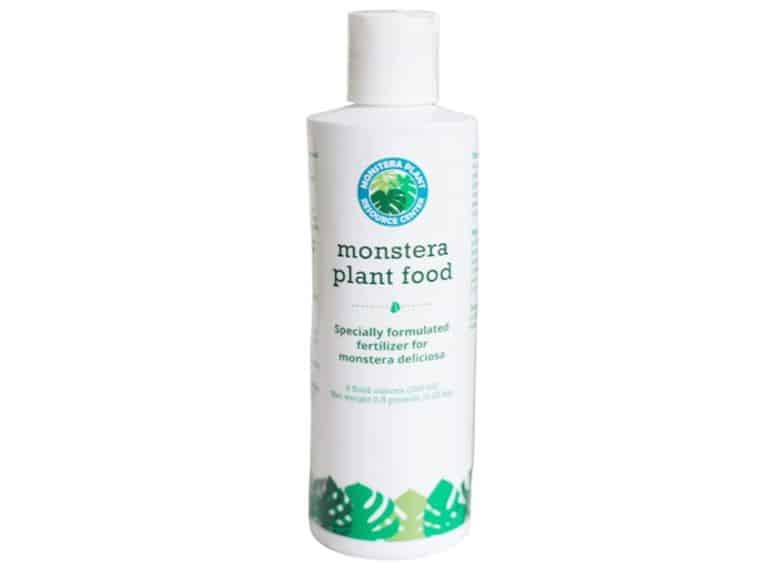
6. Osmocote Smart-Release NPK (15-9-12)
Osmocote Smart-Release, an excellent slow-release formula ideal for indoor and outdoor plants, includes plant food. It is one of the Scotts Miracle-Grow brands, an American multinational corporation. So, you don’t have to doubt the quality.
Your plant will significantly benefit from the 11 fortified essential nutrients, and one feeding can last up to 6 months.
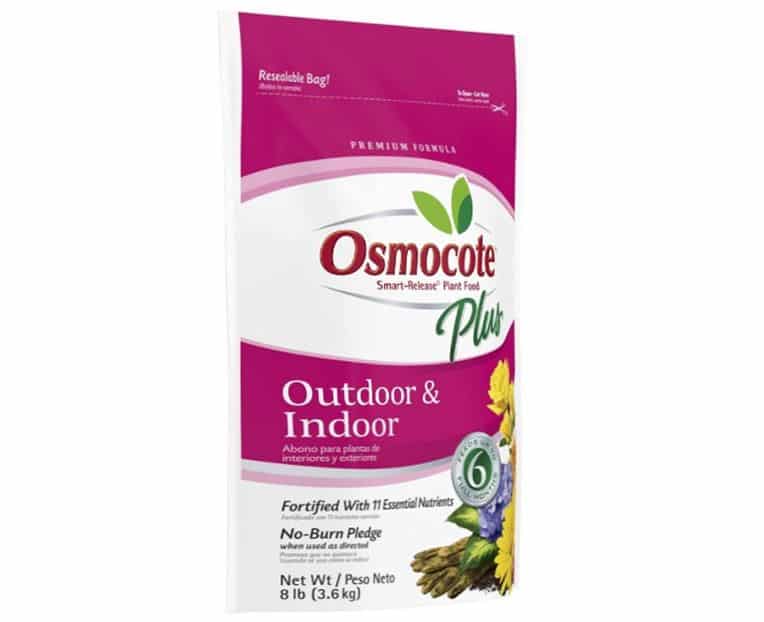
When to fertilize your Monstera?
Fertilize Monstera during the growing seasons, i.e., early spring until late summer. You can feed it all year in the tropics or subtropics.
In fall or winter, don’t fertilize these houseplants as they aren’t growing much. Also, don’t feed immediately after transplanting or repotting for the next four weeks. Most potting mixes have added fertilizers.
How to fertilize Monstera
How to fertilize Monstera depends on which kind you prefer. If you use a liquid houseplant fertilizer, use half the recommended strength. For instance, if the manufacturer recommends one teaspoon per 1 gallon of water, use ½ a teaspoon in a gallon of water. Use this solution to water your plant. You can even start with a smaller amount and increase to half-strength.
Most 20-20-20 all-purpose fertilizers need you to mix one teaspoon per gallon of water if using it outdoor and ½ a teaspoon per gallon of water. If you use a 10-10-10, you need to double the amount.
For granular and slow-release fertilizer, start applying in early spring and follow the manufacturer’s advice for subsequent applications. Again, use half the recommended dosage.
Last but not least, if you have outdoor Monstera, use the recommended strength, not half. But start with a lower amount and gradually increase it.
How often to fertilize Monstera?
Fertilize Monstera once a month if you use an all-purpose, balanced liquid fertilizer once a month during the growing season only. If you opt for a slow-release formula, start fertilizing in spring and follow the manufacturer’s recommendation.
Monstera fertilizer burn and other overfeeding signs
While very essential, overfeeding isn’t suitable for plants either. The most common cause is overfeeding (too much at once). Still, things such as fast-releasing fertilizers and using types very high in nutrients or soils that don’t drain well can result in overfertilization.
Signs that you may be overfeeding your plants include the following:
- Lower leaves turning yellow
- Wilting and drooping
- Fertilizer burn (scorching or burning) – brownish or yellow curled leaves, including tips and margin.
- Stunted growth
- Crusts of fertilizer on your potting mix
- Leaves falling off or dropping
If you notice any of the above symptoms and you have been overfeeding your Monstera, here is what to do:
- Leach the soil: Pour a lot of lukewarm water through the potting mix until the excess runs from the bottom of the pot. Please leave the plant for about an hour and repeat it.
- Scop to soil and replace: Scoop no more than ¼ of the topsoil and replace it with fresh potting mix.
- Repot your Monstera: You can give your plant a fresh start by repotting it. Afterward, don’t overfeed again.





Leave a Reply